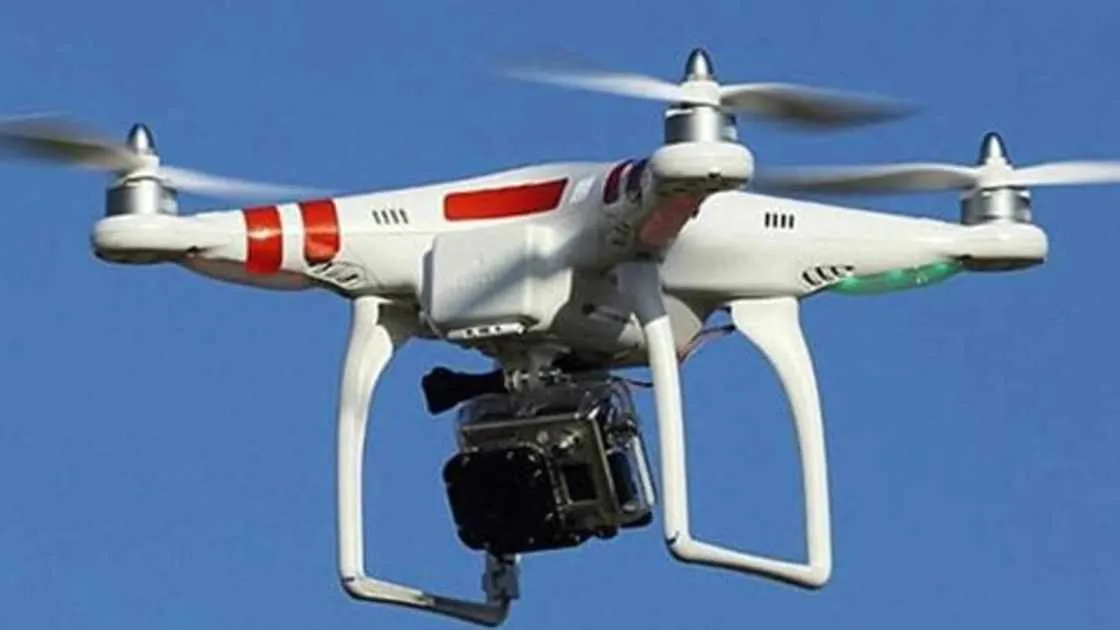Drones have become highly significant to the operations of many companies and government agencies in recent years, penetrating sectors where specific companies were stagnant or lagging. Drone capabilities are proven to be beneficial in places where a man cannot access or operate quickly and effectively, from quick deliveries during rush hour to surveying inaccessible army facilities.
Increasing performance and efficiency on the job, reducing workload and manufacturing costs, improving accuracy, fine-tuning interactions between service and consumers, and resolving customer issues. Large-scale security are just a few of the many benefits that drone data management software can offer in the workplace.
Construction, agriculture, mining, equipment and real estate monitoring are just some of the industries that can benefit from drone surveys. When it comes to making decisions, provide a comprehensive, accurate snapshot or 3D model of your development area along with dimensions.
Here are some examples of how drone data technology is being used.
The technique of drone data collection is readily available:
Remember the good old days when learning to fly a drone required a license and years of expertise. Manufacturers have learned from the civilian market and developed their interaction design and flight controls to be as simple as possible, reducing training time and allowing companies to adopt flight management software. drone data into their operations quickly. Knowing the laws and licenses necessary to operate drones in your country is crucial.
Telecommunication wires for submarines:
A financial institution in Asia could not transfer cash to Saudi Arabia to pay for oil without undersea cables. It will be difficult for the US military to communicate with troops fighting militants in Afghanistan and the Middle East. A student from Europe will not be able to share with their family in the US via Skype.
Billions of dollars are sent over the networks in money operations almost every day. The infrastructure also handles most of the talks between the United States and Europe and other parts of the world. Underwater drones are responsible for monitoring and protecting these internet connections.
Examination of pipeline projects:
Pipeline companies currently use unmanned aerial vehicles for anything from inspection and modeling during route preparation to monitoring the right-of-way after the pipelines are up and running. Topography, ongoing services, defining property boundaries, creating a project platform for development, measuring newly laid pipes, and retaining traces of objects during renovations are all standard features of these studies.
Supervisors of natural disasters:
After a disaster or artificial tragedy, drones offer a quick way to collect data and manage waste and wreckage for injured patients. Its high-resolution lenses, detectors and radar give rescue teams a greater viewing angle, reducing the need for crewed helicopters. Due to their small diameter, drones can offer a clear picture of regions where conventional aircrafts would be unsafe or unproductive.
Drone data management software can locate missing persons and unlucky victims, especially in difficult territories or difficult situations. A drone could drop goods into hard-to-reach areas in war-torn or disaster-stricken areas, in addition to locating casualties. A drone, for example, can be used to install a walkie-talkie, GPS locator, medicine, food sources, clothing, and water to trapped victims before rescue teams can transport them to a location. safer place.
Assessment of the site, development tracking, and as-built charting:
Aerial drone modelling and photography has enabled remote site visits, development monitoring, and run-time conforming modelling to be fast, simple and economical. Use periodic charts to track progress throughout the process. As work on the site progresses, check the amounts of cut / levelling fill. Reports containing updated information, videos and images should be distributed to participants. Finalize site changes and provide as-built data to agencies.
Agricultural production with a high level of accuracy:
Growers and growers are always looking for inexpensive and effective ways to regularly monitor their crops. The drone’s ultraviolet sensors can be programmed to assess crop health, allowing farmers to respond and improve agricultural parameters on-site with fertilizers or pesticides. It also increases yields and results in higher yields.
Digging and mining procedures:
Occupational safety is a top priority in mining and landfill activities. Whenever inspectors use aerial drone data management software to collect precise model and dimensional data from the above data, they can dramatically reduce hazard and responsibility by reducing or removing the time they spend on the surface. Using drones to collect data increases productivity. Because of a drone’s ability to collect data from above, there is no need to stop when surveyors walk around a trench. In addition, it takes fewer man-hours to create large, accurate data sets, which translates into lower costs.
Aerial drone mapping can provide you with reliable information quickly and cost-effectively, no matter what geospatial expertise you operate – forestry, property management, ecology, agribusiness, satellite imagery, oil and gas or otherwise. Using an easy-to-deploy aerial survey drone, we can take accurate aerial data and convert it into necessary 2D requirements (maps) and 3D models of large and micro-sites. We can practically take to the sky any time we need to with an aerial drone. Weather conditions are rarely an issue at relatively low heights.
Designing modelling in construction management:
Civil engineering architecture needs precise and accurate geographic map data to ensure that design considerations match real-world conditions. The low height of the drone requires a more excellent surface survey, which almost always gives higher accuracy than traditional field surveys. If needed, standard survey measurements on critical hard surfaces and irrigation system inversion heights can complement drone imagery. Drones can provide digital orthophotos, videos, and photographs to improve project plan planning, construction, and monitoring, and response times are faster.
Concerns about unmanned aerial systems
One of the biggest concerns about unmanned aerial systems right now is that the potential legal issue that arises from collisions between planes and other planes is very real. When you consider that in the United States there are already thousands of registered drones, that might just get people’s attention. However, the United Kingdom and Australia have already taken steps to solve that problem. Perhaps we’ll soon see more countries take similar measures.
Collecting drone data
Recently there has been a significant increase in the use of drones or Unmanned Aerial Vehicles to collect and map real-time imagery of everything from deserts to forests. This is because of one important fact: the UAVs can collect and map real-time imagery in areas where there is not yet a human presence, but where humans work.
The UAVs are also helping military and civilian operations to better plan and prepare for future operations, and they are helping local governments and civilian organizations gather intelligence and mapping data in their areas of responsibility. It’s a win-win for everyone.
Before discussing how UAVs are collecting drone data, let’s have a quick look at how they work. When an UAV autonomously flies out over a remote area and takes images with its high-resolution camera, it is performing what is called “ground observation”. This is just one of the many applications that UAVs are used for. UAVs can also measure the soil, take air photographs, analyse topography, measure wind, snow, ice and rain; and collect and transmit this data to operational centres where scientists, engineers, geologists and other professionals can quickly and efficiently analyse the information.
Not only is this type of research important to the national security community and to our military forces, but it is also very valuable to private individuals who are home-owners and business owners who want to better understand their surrounding landscapes and surroundings.
There are several companies now offering software solutions to the UAV (unmanned aerial vehicle) researcher and hobbyist UAV enthusiast. These software developers specialise in data collection from UAVs, including data collection using real-time imaging and UAV autonomous flight. Software developed for this purpose is called Open Flight Delivery, and it allows users to not only upload their own UAV aerial imagery and video, but to publish this imagery on the web, and with quite reasonable (and sometimes free) payment options. This is one of the fastest growing areas of UAV technology research and development
Drone Data Defined
The aircraft data is: Processed. Hundreds or even thousands of images are identified, arranged and / or chained together to form an ordered, usable and consistent data set. Measured. Drone data is often processed into data products that can be accurately geolocated and / or measured, much like a map or computer model.Conclusion:
Drones are now in their infancy in terms of widespread acceptance and use. They have effectively torn existing industry boundaries. Construction, agriculture, mining, equipment monitoring, and real estate are just a few of the sectors in which drone photography can be useful. Knowing the laws and licenses required to operate drones in your country is critical. Drones are capable of locating missing and unfortunate victims, especially in difficult terrains or difficult situations.







